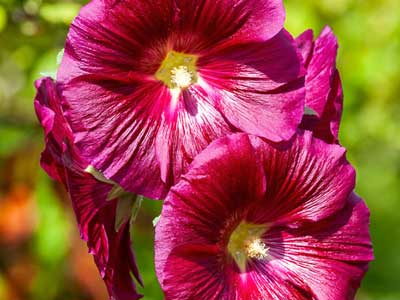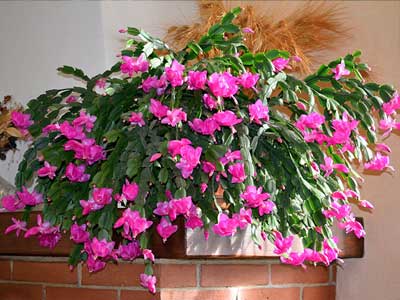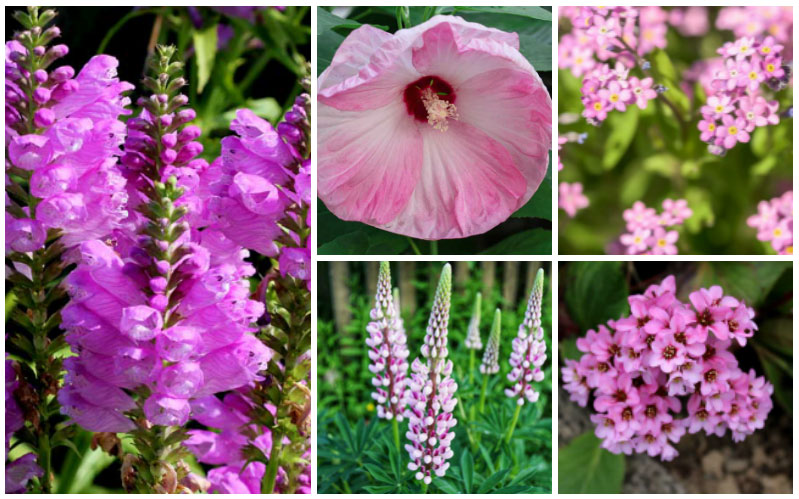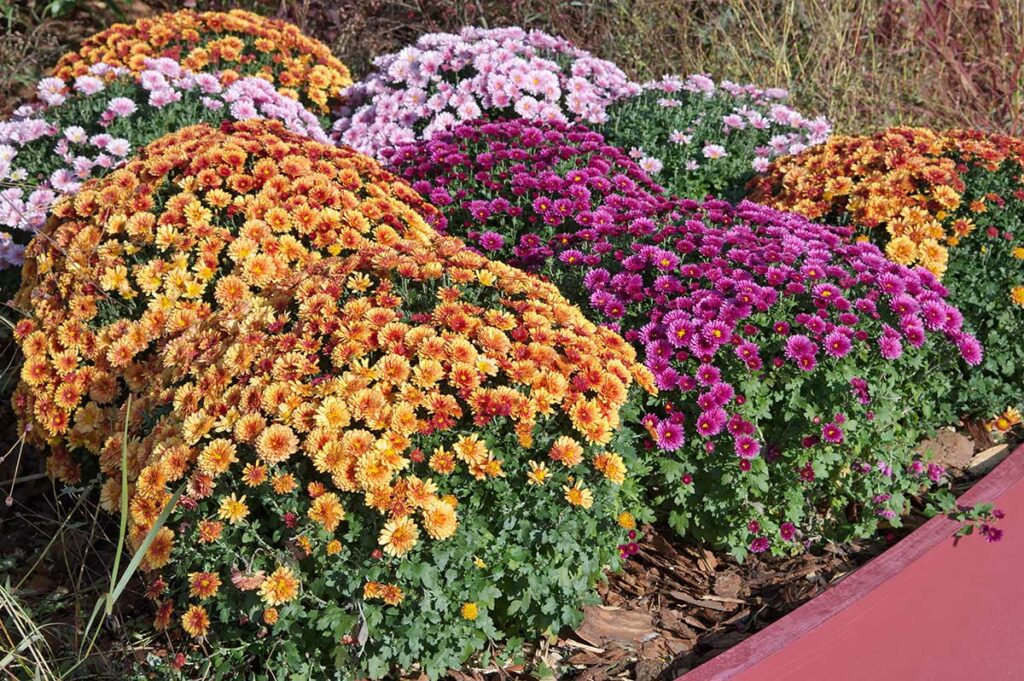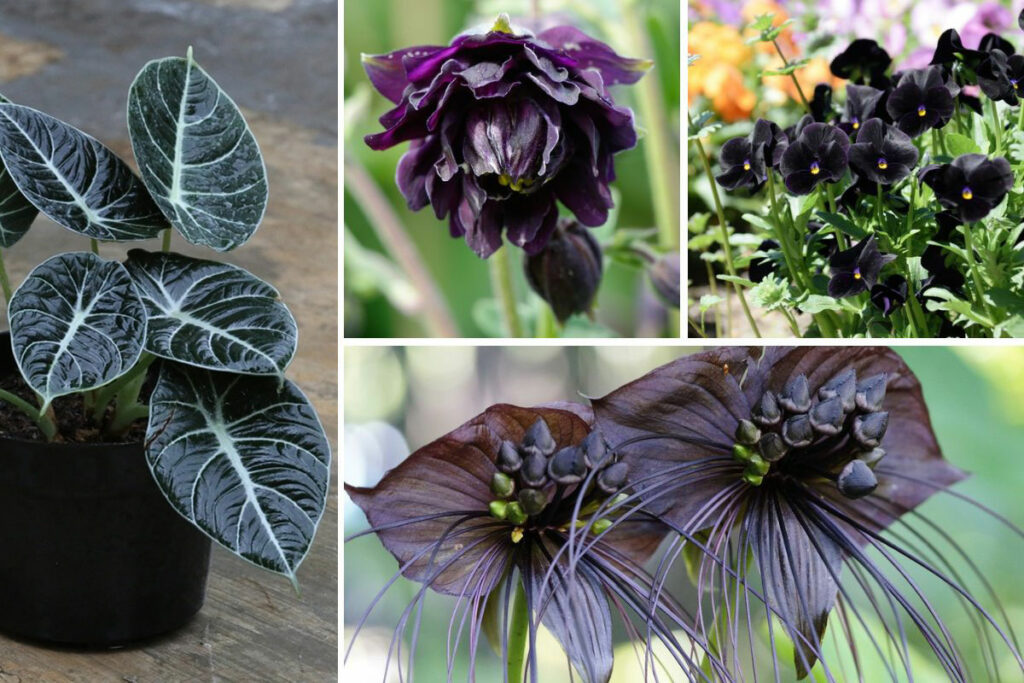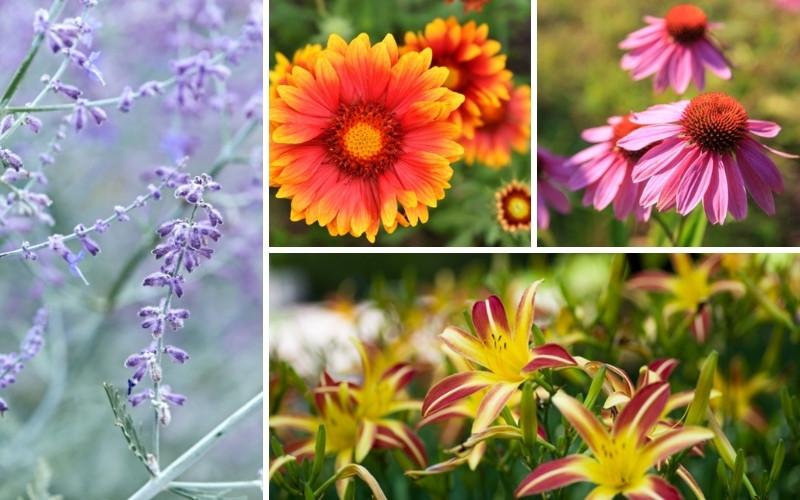
The state of Kentucky encompasses only two USDA plant hardiness zones that range from 6a to 7a. Much of the state is considered subtropical with its mild winters and humid summers. That means there are a wide range of perennials to choose from when establishing a new perennial bed in Kansas.
While the perennials listed here should thrive in all parts of Kentucky, knowing your gardening zone is important as hardiness can vary among cultivars. It is prudent to check plant identification labels carefully for hardiness and light requirements to make sure they match the conditions in your perennial bed.
Bush Clover (Lespedeza thunbergii)

This delightful little shrub produces masses of pink flowers on arching 2-foot stems giving the impression of a waterfall of color. It blooms from late summer into the fall. It grows to heights of 4 to 5 feet with a spread or 10 feet, depending on the cultivar. It does best in humus-rich, moist soil that drains well, but will tolerate poor or sandy soil. This sun-loving plant prefers full sun, but will grow in partial shade. It is hardy in USDA plant hardiness zones 5 through 8.
Aromatic Aster (Aster oblongiflorius)

The aromatic aster provides a showy display of color in late summer and continues into the fall. These frilly daisy-like flowers are a lovely shade of blue with a contrasting yellow center. They attract bees and butterflies bringing the garden to life with movement and color. They grow to heights of 18 to 24 inches with an equal spread. Pinching them back early in the season causes the plant to form dense, compact foliage and ensures an abundance of blooms. Aromatic asters prefer full sun and do best in average well-drained soil, but they will tolerate dry or sandy soil. They are hardy in USDA plant hardiness zones 3 through 8.
Raulston Allspice (Calycanthus × raulstonii)

Also known as ‘sweet shrub‘ this perennial shrub produces maroon flowers that emit a sweet fragrance. It blooms form in early to late spring. It grows to heights of 8 to 10 feet with a similar spread and prefers full sun to partial shade. It likes rich, moist soil but will tolerate poor or dry soil. It is hardy in USDA plant hardiness zones 5 though 9.
Bluestar (Amsonia hubrichtii)

This delightful flower earns its name from the masses of blue, star-like flowers held above feathery green foliage. It grows to heights of 2 to 3 and blooms in the spring, but the foliage puts on another show as it turns golden in the fall. Bluestar attracts bees and butterflies and prefer full to partial sun. If grown in full sun, it benefits from some afternoon shade. It thrives in average well-drained soil and is hardy in USDA plant hardiness zones 5 though 8.
Butterfly Bush (Buddleia davidii)

Also known as summer lilac, the butterfly bush is shrubby perennial that produces an abundance of conical flower heads filled with cluster of tiny flowers similar to a lilac. These flowers bloom from June to September and are a lovely light purple. They reach heights of 3 to 5 feet with an equal spread. They attract butterflies all summer and prefer full sun. Butterfly bush prefers average, well-drained soil and will suffer if the soil drains poorly. They are hardy in USDA plant hardiness zones 5 through 9, but some cultivars die back in the winter.
Coreopsis (Coreopsis spp.)

Coreopsis is hard to beat for long-lasting color in the flower bed. This hardy perennial comes in a wide variety of sizes and colors, ranging from single petaled pale yellow to massive double petaled golden flowers. It prefers full sun and average soil as long as it drains well. Coreopsis reaches heights of 2 to 6 feet or more, depending on the cultivar. Coreopsis is hardy in USDA plant hardiness zones 3 through 9.
Coneflowers (Echinacea spp.)

Coneflowers produce large, daisy-like flowers with reflexed petals with a contrasting cone in the middle. While the purple coneflower with its striking orange center is the most popular, there are many varieties to choose from. Coneflowers can be pink, yellow, raspberry and even striking shades or green with contrasting pink or purple. They grow to heights of 2 to 4 feet and prefer full sun. Coneflowers prefer evenly moist soil that drains well, but will tolerate nearly any soil. Coneflowers are hardy in USDA plant hardiness zones 3 through 9.
Rudbeckia (Rudbeckia spp.)

Traditional rudbeckias with orange petals and a dark brown center are often called black-eyed Susans, but there are many other varieties to choose from. The lovely ‘Irish Eyes‘ features soft yellow petals with a distinct green eye in the center, while the autumn colors series produces flowers in various shades of red, orange and brown. Rudbeckia grows to heights of 2 to 4 feet with a similar spread. It prefers full sun, but will grow in partial shade. It thrives in average, well-drained soil and will even tolerate some drought. Rudbeckia is hardy in USDA plant hardiness zones 4 through 9.
Daylily (Hermerocallis)

Daylilies make a delightful addition to any perennial bed with their bold colors and large trumpet-shaped blooms. They provide long-lasting color to the bed, particularly if you plant early, mid and late season bloomer. While each flower only opens for a day, these robust plants produce so many buds that there are always fresh flowers in bloom. Daylilies grow best in full sun, but will tolerate partial shade. They prefer average soil that drains well and will suffer in soggy soil. They are hardy in USDA plant hardiness zones 4 through 9.
Shasta Daisy (Leucanthemum x superbum)

Shasta daisies brighten the flower bed and simply shimmer in early morning light. These hardy plants make an excellent border or can be grouped together in the front of the flower bed. Their white blooms pair well with any color, but are stunning when planted with roses. Shasta daisies reach heights of 1 to 2 feet, depending on the cultivar. They prefer full sun and evenly moist soil. Shasta daisies are hardy in USDA plant hardiness zone 4 through 9.
Conclusion
Creating a new perennial bed, or adding to an existing one can be a lot of fun, but don’t expect amazing results right away.
Most perennials bloom sparingly the first season and require 2 to 3 years to reach their mature beauty. But rest assured, once they have established a strong root system and adjust to their new home, your perennials will return each year rewarding you with bigger and brighter blooms.
Nearly all perennials benefit from digging them up and dividing them every 3 to 5 years to prevent them from becoming overgrown.



